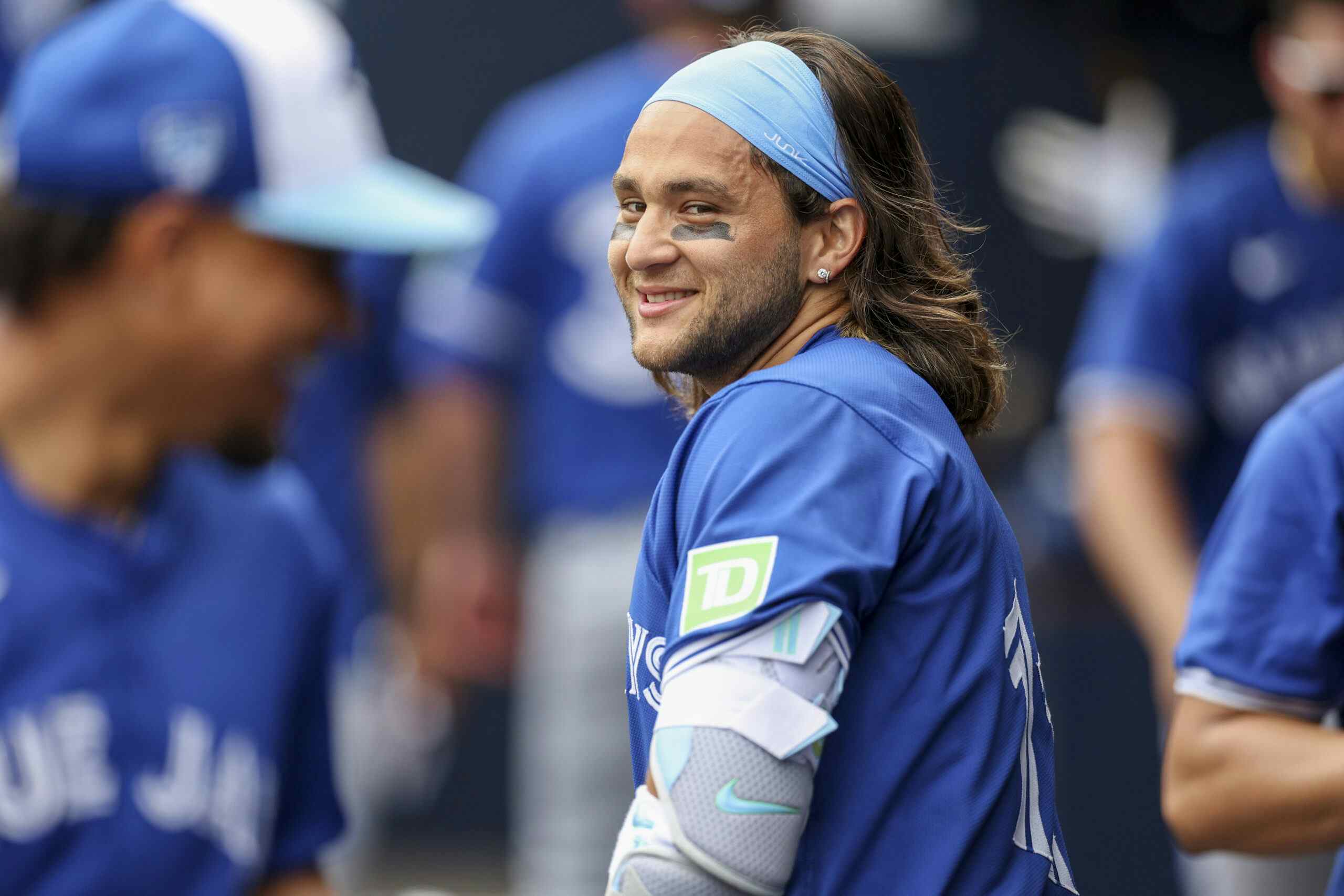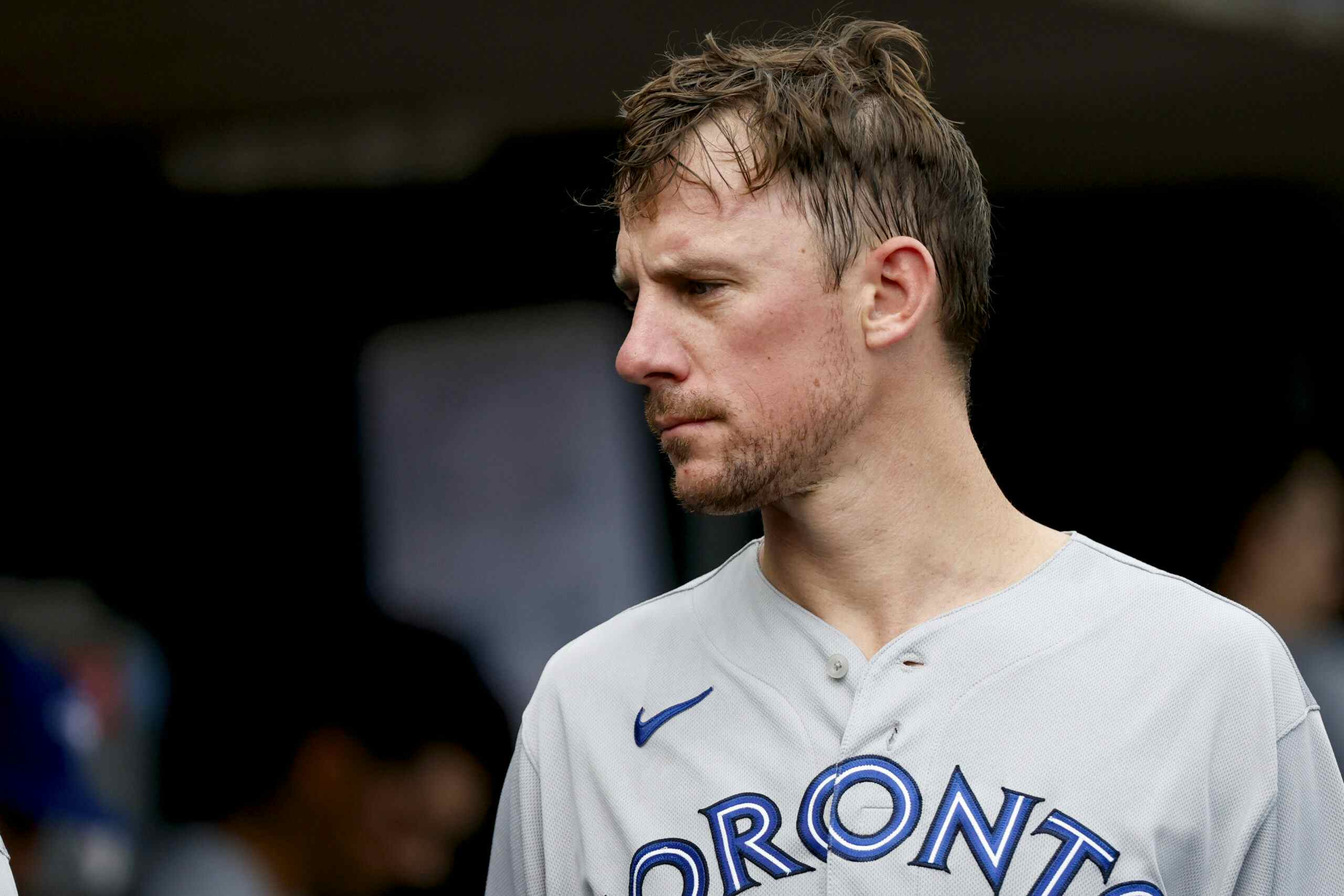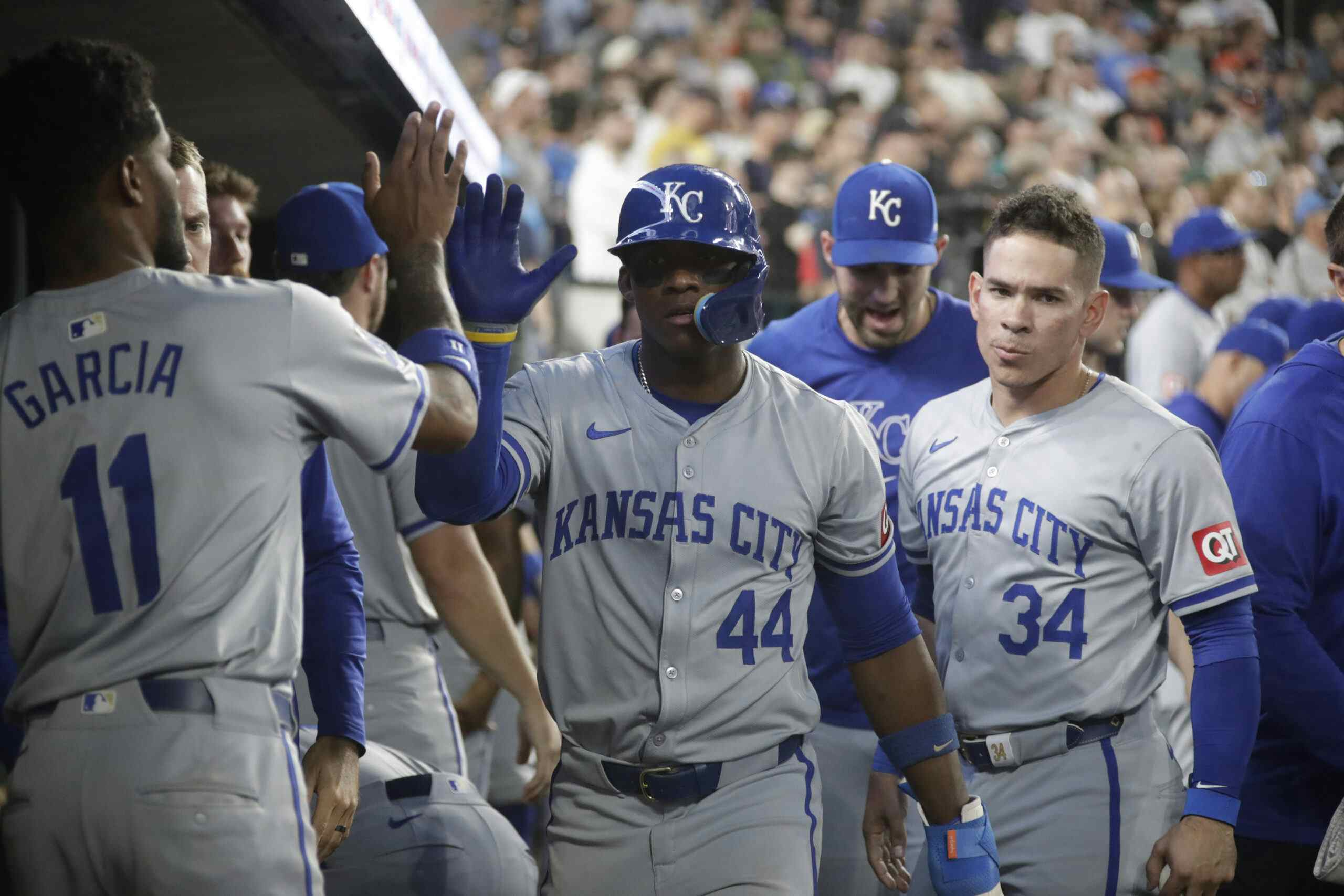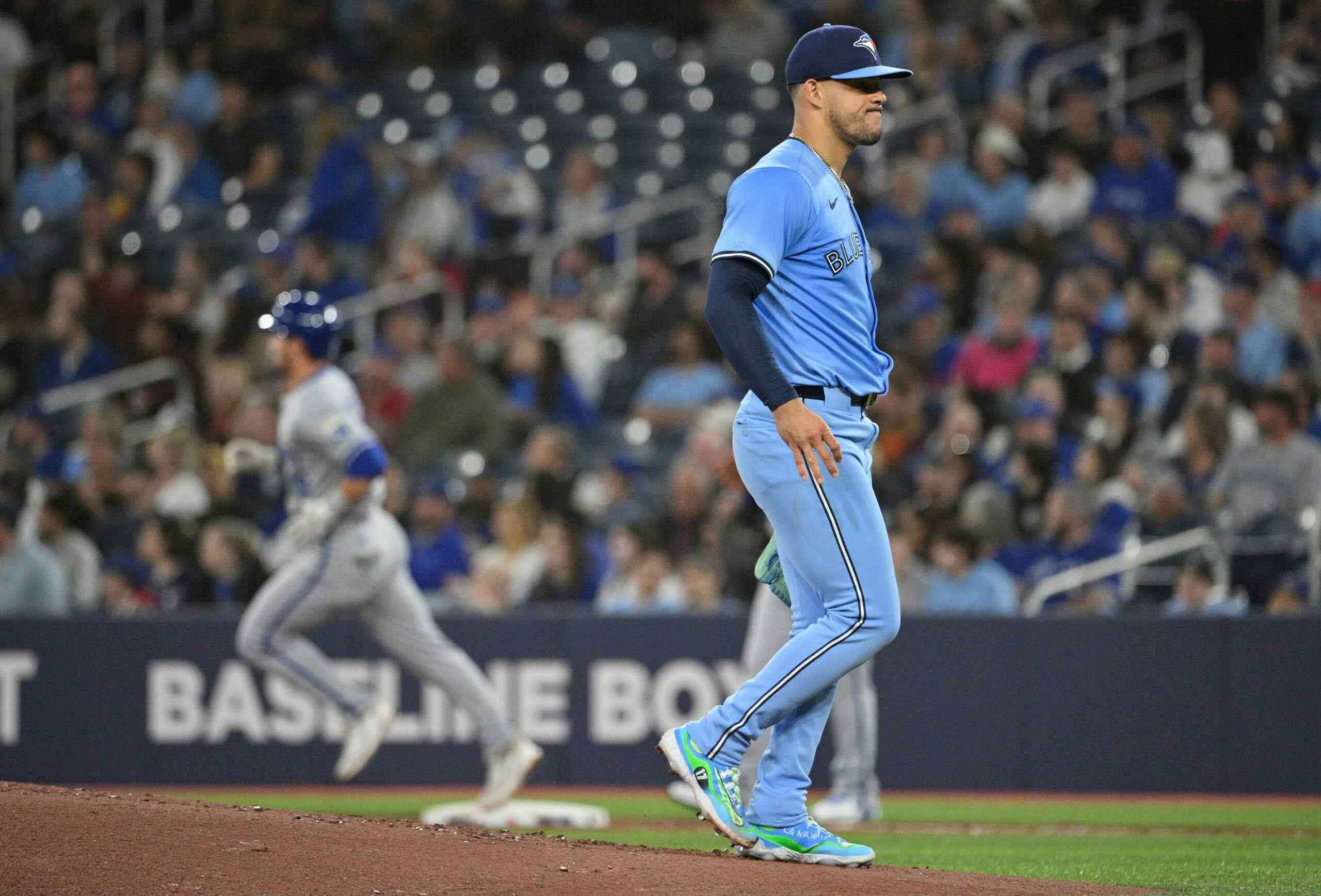Di Francesco: An Interview With Ross Atkins
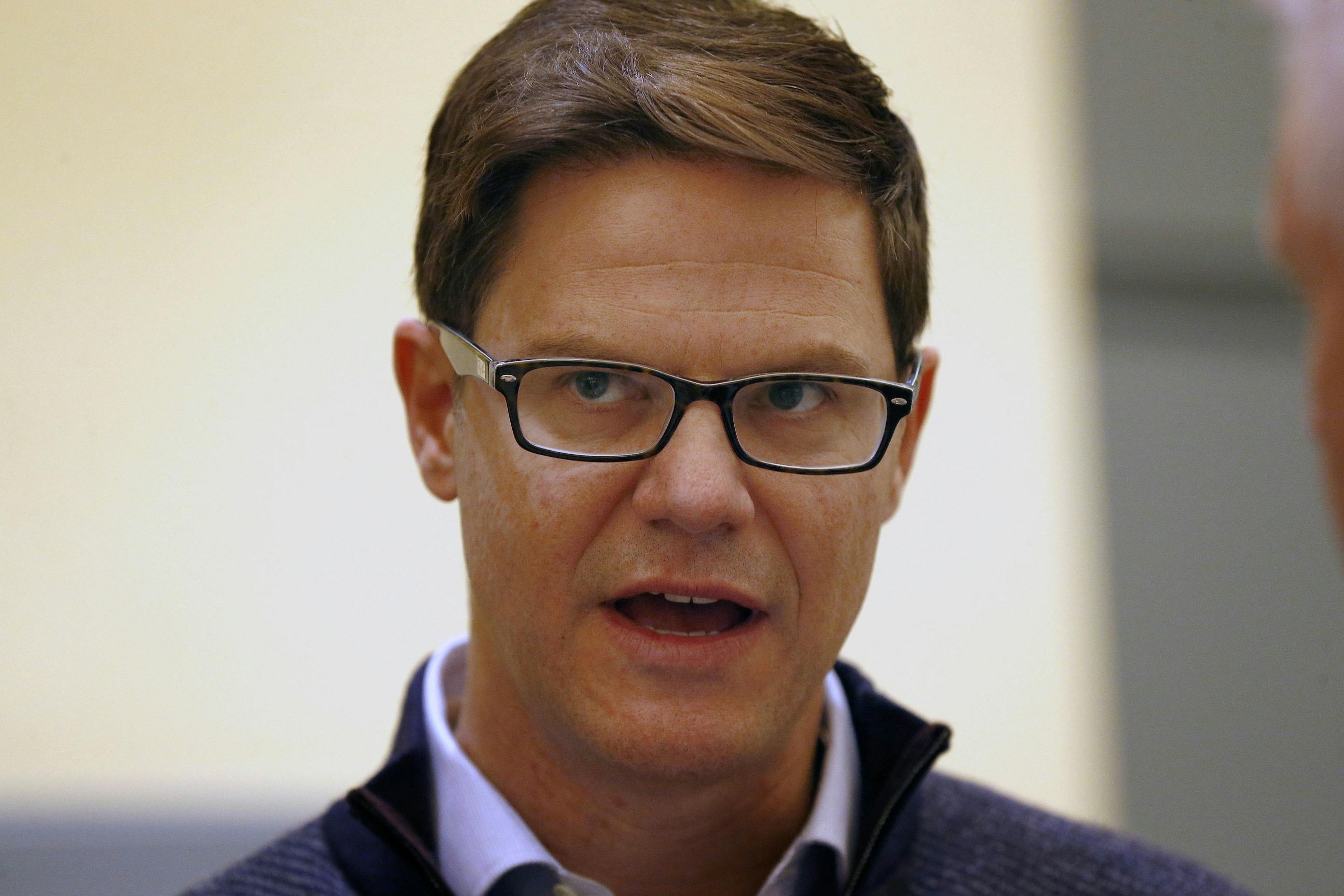
On April 7th, 1977, the Toronto Blue Jays played their first ever game. It was a snowy Thursday afternoon that would launch the franchise and its fans into an unknown MLB future where great moments soon awaited. The day was an exercise in fine Canadian couture. Anne Murray sang the national anthem. The snow-covered field had to be squeegeed clear, Zamboni-style. And the fans wore parkas, toques, and scarves. The only thing missing, thanks to government regulation, was the beer. But beer would soon find its way into the ballpark, arriving in July of ’82 at a cost of $1.75 per drink, which was considered expensive at the time. Fans weren’t too happy at the cost they would have to pay for their barley and hops, and we still aren’t today.
The Blue Jays, of course, weren’t Canada’s team just yet, as that title had belonged to the Montreal Expos since 1969. However, on that picturesque Canadian day in April of 1977, a new franchise was born in Canada, and the good birds of summer would soon catch the ‘drive of ‘85’, and the rest is all history.
Peter Bavasi was the first GM in Blue Jays history, responsible for putting that expansion team together, and then the duties were passed on to the great Pat Gillick, whose tenure from 1977 to 1994 shaped rosters that would compete year-after-year from 1985 to 1993. Gord Ash took over for Gillick in 1994 and was followed by the much-maligned J.P. Ricciardi. In 2009, Alex Anthopoulos (still lionized by many fans) took the reins, leading the team through a series of bold trades and pickups back to the promised land of the playoffs in 2015.
Anthopoulos created a roster in late July of 2015 that reignited a love for the Toronto Blue Jays across our great nation. That season undoubtedly gave rise to a whole new generation of fans — many of whom seemed to quickly forget all the acrimony between fans and front office that came before it.
When Ross Atkins took over from interim GM Tony LaCava to become the 7th General Manager in Blue Jays history, fans across the nation were quick to react, often criticizing Mark Shapiro for hiring one of his “Cleveland cronies.”
In the beginning, many refused to welcome the new front office that was taking shape in Toronto. Those who did their due diligence, and read what they were writing in Cleveland about Mark Shapiro and Ross Atkins at the time, they may have come to realize that these two executives are highly respected throughout the industry and had key roles in turning the Cleveland franchise into the perennial contender that it is today.
Ross Atkins took over a position that was held by the first GM to bring playoff baseball back to Canada since 1993, and I’m sure that when deciding to take the job, he knew that it would take time to gain the trust of Blue Jays fans. That seemed to have been the case, even after Shapiro and Atkins added significant pieces that would help bring playoff baseball back to Toronto for the second consecutive year in 2016.
The truth is that if things didn’t go as sideways as they did last year, the team very well could’ve been back in that Wild Card game, or at least gotten a whole lot closer to it.
Ross Atkins was a player before becoming an executive, spending 5-seasons in Cleveland’s minor league system as a pitcher. I don’t think that Atkins could have ever known where baseball would lead him today, but it has brought him here to Toronto, and he is now playing a vital part in guiding this franchise into the future with the hope of one day bringing a World Series championship back to Toronto.
I recently had the cool opportunity to interview Ross Atkins, who was kind enough to do this with me, so I decided to break the interview into three sections: The Past, The Present, and The Future.
* * *
The Past
I decided to begin the interview by talking to Ross about his time in the minors. I remembered him telling a story about Bud Black asking him what his life was going to be after baseball. So I asked him about that moment, and he could have ever imagined that the road he was about to travel would lead him to where he was today:
I suppose I could have. I did not imagine that. I would always focus on what I was doing at the time. As a 26-year-old, when the bulk of your roster is not 26 and your performance is not good and you have some time on your hands sitting in a bullpen, I did start to think about some alternatives. So it wasn’t a complete shock to hear Bud Black ask that question, but it was very telling of how the organization — or at least how Bud Black, viewed my ability to impact the major league team. So it was a bit less than inspirational, but a very real and pivotal moment in my career because it quickly shifted my mindset to those alternatives being more concrete and bigger picture, and less about somewhere in between, for lack of a better way to say it. It just really shifted my mindset to thinking about “OK, not life after baseball, life in baseball – but doing what?”
Sticking with his time in the minors, I asked Ross what pitcher he looked up to while he was developing his skills and working towards his major league dream, and he was quick to respond:
Mike Mussina and Charles Nagy were the two that I admired, tried to emulate, studied — constantly. I was fortunate enough to be in the same organization as Charles Nagy and was seeing his work ethic and routine first hand. Orel Hershiser was another guy that had a big influence on me.
Did he see any similarities in pitchers on the Blue Jays staff and those guys he admired as a young pitcher?
Yeah, J.A. Happ is the guy that jumps out at me. He’s unbelievably hard-working and focused. He has minimal distractions in his life, in his approach to professional baseball and is in my opinion, one of the more underrated starting pitchers in professional baseball.
I have always been amazed at how strength and conditioning has evolved over the past couple of decades, and obviously this is an area the the Blue Jays new front office has put a lot of focus on, so I wanted to know how it had changed from the mid-to-late nineties, when Ross was in the minors, to the present day. Ross was very enthusiastic and passionate, as he opened up about how sports science has changed the way teams develop their young talent:
Yeah … I mean, it’s interesting because my experience, I think, at that time, Mark Shapiro and Cleveland were on the cutting edge of strength and conditioning in the early nineties, as they were pushing forward to be a bigger part of player development and major league baseball, so I came up in that environment. And I think that a lot of teams followed the Cleveland Indians’ model of the early-to-mid-nineties. And I’m pretty sure that Cleveland — I was a player so this might not be better to quote me on — but I’m pretty sure that Cleveland was the first organization to have strength and conditioning coaches at every minor league affiliate. Now in 2018, we can probably say that every minor league affiliate [in the game] has at least a part-time strength and conditioning coach there.
So there’s a couple of ways that it’s evolved. But the biggest change is the commitment. That’s the biggest change. It’s now a commitment from all 30 teams who are applying and providing the appropriate resources for young talent to get stronger and stay healthy. In baseball, as you know, it’s about two things: it’s about improving your overall strength and conditioning, but it’s also durability because of the magnitude of a 162-game season. And I think that’s where you’ve seen the evolution aspect of it. It is learning how to make it baseball skills-specific, individualizing it not only to, of course, pitcher to position player, but then individualizing it from infielder to outfielder or from outfielder to catcher and from person to person, so that evolution has then now introduced data and that’s where sports science has more recently come into professional baseball — and not surprisingly Mark is at the forefront of sports science coming into professional baseball.
I could talk about this forever but that’s, I think, probably the best overarching summary of how I could describe how it has changed and evolved.
Speaking of Shapiro and his being at the forefront, I asked Ross what made Cleveland’s front-office approach under Mark different compared to other teams’, as it has become a sort of high school for executives in the game like Chris Antonetti, Josh Byrnes, Ben Cherington, Paul DePodesta (now the chief strategy officer for the Cleveland Browns), Derek Falvey and others:
A side note on that — at the GM’s meetings this year when Chris Antonetti got the Executive of the Year he said, ‘I’m looking out right now and I’m looking at 16 people at the GM’s meeting that I worked with in the past ten years and that were all in Cleveland and that you guys are all a part of this award. So that’s a remarkable number in a short period of time.
But to answer your question, I think the broad response to that is Mark’s character and values is why. The more specific answer to that is, I think that there are a lot of GMs that probably can negotiate as well as Mark, a lot of GMs that can think strategically as well as Mark, there probably – I don’t want to say a lot; there probably are a lot — I want to say there are some that can do those things as well as Mark. But what Mark did so differently, and so profoundly was he thought a lot about hiring and he thought a lot about development and always empowered. So the hiring is probably the most important piece of that equation. So he obsessed about acquiring talent and not just players, but also for office executives, so he was constantly thinking about where to find the best, young, brightest talent and I think the way he was able to attract the best, young, brightest talent was by thinking about their development, their opportunities, their exposure to learning, their growth and that never being in question.
* * *
The Present
I thought it was time to shift the conversation and focus on the present. I decided to start easy, so I threw a bit of a soft ball at him, asking what, in his opinion, makes Toronto an attractive city and organization for players to want to be a part of:
I think this city has the chance to be one of the best places in professional sport to work and play. A large part of that is that we represent a nation. We’re in one of the more progressive cities in the world. I feel very fortunate to call it my home and extremely proud and excited to raise my children in this city.
It’s a remarkable city and remarkable country and this baseball team gets to represent the remarkable city and remarkable country. And in addition to that, we have an incredible fan base that wants to support a winning culture and a winning environment, and I feel that this organization has arguably some of the better front-office alignment throughout baseball operation, and that’s because of Mark.
Because of all the things that I just said, because of the things that he created in Cleveland, he will create that here, where we are aligned and we are trusted and we have the resources that we need. As we continue to win — and we won’t just be a ride that goes straight up and all, obviously we’ve already had a tough year last year — but when we win and when we sustain a winning team, I’m confident we, we are confident, that the fans will acknowledge and support that with an incredible amount of energy and power, which will only help further to build upon what I think can be one of the best environments in professional sports.
We were talking about the fan base, so I decided to touch on Mark Shapiro’s comments in a recent interview on The Jeff Blair Show. Mark had said that if he were running the team without fans, and it was an intellectual exercise, he probably would’ve hit a reset over a year ago. I knew Atkins might have his own thoughts on this, but I wondered if he could offer some insight into Shapiro’s thought process:
I think that is acknowledging everything that I just said. One aspect of it that maybe is not said in that statement is that we have expedited a level of confidence in our player development, high performance, and scouting international pro and amateur teams. And what I mean by expedited is that if you would have told me two years ago that I would have the level of confidence in our cohesiveness, our collaboration, in our collective values aligning across all of those departments, I would have told you that would be very soon. But it is palpable how quickly it’s happening in baseball operations, and because of that, we feel like we can overcome a non-traditional approach to bridging the gap with the oldest position player roster in baseball and a team that was not able to overcome the injuries that we had last year. So the intellectual exercise part is suggesting that because of the age of our roster, because of where we are with some of our contracts, because of where the Yankees and the Red Sox are, it might make some sense to consider to do a reset at this time to start that sooner than later. But he’s acknowledging that this isn’t our team, this is the fans’ team and what the fans want right now is a real piece to the equation. But the second part of it or the first part of it that I just mentioned is the part that gives us the confidence to be able to overcome that. To overcome what the Cubs and the Houston Astros and their approach of having a very hard reset and going through some very very difficult years was coming off a different set of expectations.
I had to bring up some pretty rock n’ roll thoughts that Ross spoke in early December to see if he could expand on them. He had said that there was nothing he cared less about than people saying that the Yankees are a lock to win the World Series. I made sure to let him know that was the coolest thing he had ever said as the GM in Toronto, to which he laughed:
Yeah … I don’t remember, unfortunately. But listen, we embrace competition. We talk to our players about raising the bar for themselves by raising the expectations of their teammates by pulling for their competition. If you’re competing for more at bats, or if you’re competing for more innings in the bullpen, or competing to not be in AAA and be in the major leagues, the best way to do that is to focus on being a good teammate and focus on your process and the things that you can control.
So when a team makes acquisitions that make them better on paper, like acquiring Giancarlo Stanton, it only further invigorates us that we are playing in an arena that is certainly the best arena to be in in professional baseball, in the AL East. To be competing in this arena is only invigorating and motivating to us. So the thought of us saying “let’s throw in the towel because a team got better” does not come into the equation for us.
I decided to circle back to what he’d said earlier about the age of his roster and injuries, asking him about depth. This offseason the organization appears to have made it a priority to address this issue in the infield and now in the outfield with the recent signing of Curtis Granderson. I asked if the team doesn’t add another starting pitcher this offseason, how confident he is with the pitching depth in Buffalo and guys like Ryan Borucki, Deck McGuire, Chris Rowley, and Thomas Pannone potentially fronting the Bisons’ rotation:
Here’s the way I see it: If we can improve and we can upgrade — and we will be given the resources that we have — we do feel that we have an incredible starting point with Marcus Stroman, J.A. Happ, Marco Estrada. We’re optimistic that Aaron Sanchez will be much closer to the 2016 pitcher than the 2017 pitcher.
Joe Biagini has been already a very solid acquisition for us and I think that there’s some information that suggests he could be our 5th starter and then, you know, ultimately, it will be time that tells because the sample size is small. So we would like to build around that depth and we’ll look to do that via trade and free agency for the remainder of the offseason and maybe even into the season – depending on how things go. But to now have Ryan Borucki, Thomas Pannone, Chris Rowley, Taylor Guerreri, Luis Santos – we’re going to have a good story out of that group.
* * *
The Future
We all know that they say that there is no such thing as an untouchable player, that any player can be had at the right price. That being said, Vladimir Guerrero Jr. appears to be as close as a prospect can come to being untouchable, so I asked Ross for his thoughts on this:
I think that it’s less and less that you hear any GMs say that. More what you hear is someone say he’s pretty much untouchable, he means too much to us and you would always have to listen, but I cant imagine us lining up in value — and that’s what I would tell another team. So to say never or to say that we are absolutely not going to do X Y or Z doesn’t seem to be the best business strategy in our opinion.
I asked Ross if there is a player who he would compare Guerrero to:
Ah. That’s a good question. Comparisons are so tricky, even with established major league players and they’re even trickier with young players. There’s a lot of math that suggests we shouldn’t be making them. It’s ultimately about their projection, their career, their development, their opportunities to improve is where we focus our energy.
In Atkins’ first draft as GM for the Blue Jays, he selected T.J. Zeuch in the first round. I was curious as to what stood out about him, what made the brain trust say, “Yeah, he’s the guy.”
T.J. Zeuch would be someone that we would be elated if he got to us at our pick, and, fortunately, he was there and all of the information lined up for us. The decision had been made days before the draft that if he was there, that’s who we would be taking. And that’s exciting for us. And, you know, you’re not gonna make last minute decisions, hopefully, for a first round pick, unless something really exceptional happens — at least in today’s game, at least in my opinion. I’m sure there are GMs that disagree with me, but we’re not going to make those types of decisions in the draft room with our first pick. You prepare for every scenario and in the case of the 2016 draft with TJ Zeuch, it became abundantly clear that he would be the best person to pick.
I asked Ross how happy he was that he was able to get a player with as much upside as Bo Bichette with the 66th pick in that draft
That was an incredible job by our area scout Matt Bishoff. He knew the player inside and out. Knew things about his work ethic, about his relationships with his family, knew things about his passion for baseball and background, about his character that made that pick again a very easy one. He was in discussion for us at the pick prior, so we were elated when he got to that pick.
I mentioned that in an interview I did with Vancouver Canadians pitching coach Jim Czajkowski, he said that Pearson, at this point, is better than Syndergaard was. With prospects like Zeuch and Pearson on the rise and Bocucki and company projected to be with the Bisons this season, it might not be long before the buzz out there starts to be about all the talented pitchers the Blue Jays have coming through the pipeline. I moved to my final question and asked Ross how close he feels the organization is to having a farm system that is strong at all levels:
That’s a great question. Like I said, a lot will depend on any potential trades that we make, but assuming that we don’t trade away from our system, I think we’re within a year to two to having one of the best or better systems in baseball. I think right now we’re in the top third and it is more balanced than it was two years ago. But I do think that the organization prior to Mark and I being here did a really good job in amateur scouting and international scouting.
There were a lot of good pieces, not only in player talent, but in staff talent in the amateur world and the international world. I can’t say enough about Andrew Tinnish, Joe Sheehan, their leadership and how it’s complimented the leadership of Steve Sanders, Tony LaCava, of course, and Sandy Rosario in the Dominican Republic. These guys were all here and we made a very easy decision to embrace what we could learn from them and how we could potentially complement them with high performance, with better cohesion and collaboration in player development, with just applying more analytical resources by hiring more analytical resources. So that progression has gone much better than I expected.
I think I was alluding to that earlier when I was talking about the cohesion and collaboration that’s happening. So because of that, I think that if we don’t trade away any of our bigger pieces — and there’s no plan to do that — then we have a real good chance to have one of the better systems in baseball, or a very well-balanced one within two years.
I decide to end the interview by asking Ross what he would like to say to Blue Jays fans who are going to read this:
The opportunities that this organization has is because of them, because of the fans. And we recognize the massive responsibility that it is to make this — not just talk about it potentially being — but make this the best place to work and play in professional sport.
* * *
Conclusion
It’s hard to predict where the road any of us travels will lead, but it’s important for all of us to stay on it and keep going. We can all plan for some sort of destination, but the truth is that life just happens, and it takes us to places that sometimes we couldn’t have imagined.
No one could have predicted the stories that laid ahead for the Toronto Blue Jays’ franchise after Doug Ault became the first hero in team history, hitting two home runs to help lift the good Birds of summer over the South Side Sox on that frigid Opening DAy.
And since that day, many iconic moments have happened, many words have been written, and the organization has taken us down one hell of a baseball road. A Blue Jays journey that has seen George Bell fall to his knees in ’85, Dave Stieb pitch a no-hitter in ‘90, Alomar put Eck in his place in ‘92, Carter leap in ’93, and Bautista bat-flip our nation in 2015.
And now Ross Atkins’ road has led him here in Toronto to help push this franchise that we all carry close to our hearts into the future. And I hope, as I’m sure he does, that one day on Blue Jays Way, the greatest road in Canada, there will be a new ‘touch ‘em all’ moment.
Recent articles from Ryan Di Francesco

